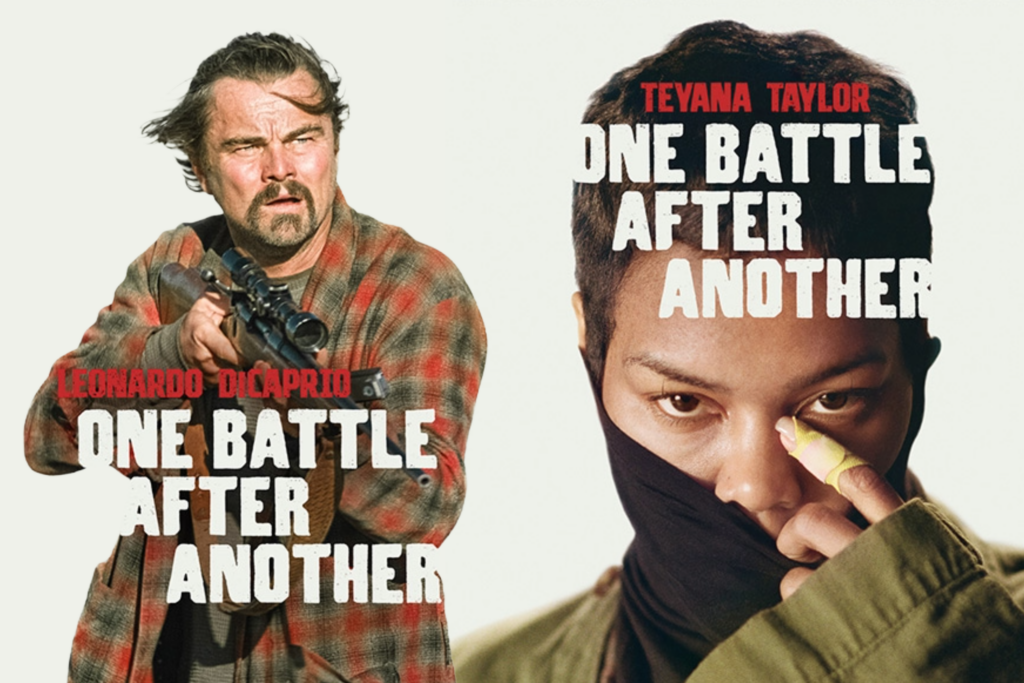‘One Battle After Another’ has eerie relevance to today’s America
‘One Battle After Another’ reflects today’s America
Review: Paul Thomas Anderson’s new film is unique in how it engages with the present political climate

One Battle After Another marks writer/director Paul Thomas Anderson’s biggest swing yet.
For an auteur with a body of work as formless as anyone else’s, his newest film stands out like nothing else. This isn’t Daniel Plainview’s sick greed, this isn’t Gary and Alana running around 1970s Los Angeles, this isn’t Reynolds’ and Alma’s sick game.
This is 2025. Things are hard. Hard is everywhere, all the time. You can no longer make things happen; things can only happen to you. Dare I say, life is now… one battle after another.
The film is about a group of left-wing revolutionaries called the French 75 as they are hunted by the twisted Colonel Steven Lockjaw (Sean Penn). Bob Ferguson (Leonardo DiCaprio) and his daughter Willa (Chase Infiniti), having assumed those names, managed to stay under the radar as “Willa” grew up, but they are soon hunted by Lockjaw for his own sinister purposes.
One thing that makes One Battle After Another unique for Anderson is how the characters exist within the story. Every other PTA movie is driven by its complex characters’ actions. Yes, they exist in rather dazzling worlds with dazzling opportunities, but ultimately, the characters’ arcs drive the overall plot of the story.
One Battle After Another’s characters, though, are products of their world, and are never not at its mercy. There are forces in place beyond the agency of these characters, and what we are shown in the film clearly comes between a deep backstory and a looming future. Bob, Willa and Lockjaw are pawns in the greater scope of the film’s world, and are definitely not the first of their kind.
But why is this the case? Because, despite adapting a 35-year-old novel (Vineland by Thomas Pynchon) and being shot over a year ago, the film is set in today. Today, as in, it could’ve taken place yesterday. Against the backdrop of the raging US-Mexico border crisis and an ICE-like branch of government operating with seemingly free will, One Battle After Another’s characters are nothing if not bound with the modern world.
And while Anderson (with Pynchon’s inspiration) is still as colorful as he’s ever been, this movie operates in a uniquely modern setting, at least for his standards. Sisters of the Brave Beaver, a weed-growing nunnery, is a telling idea from the person who once wrote Boogie Nights. A chilling shot of its nuns rounded up and bound with zip-ties is something I wouldn’t have seen before this year in a New York Times article. A white supremacist secret society called the Christmas Adventurers Club feels like it could be next month’s Trump Administration scandal. For a filmmaker whose last (and only) movie set in the twenty-first century is dominated by the use of wired phones, cell phones in this movie are rather jarring to see, especially when they become an unforgettable element of the plot.
Anderson’s other departure, probably bigger than anything actually in the story, is One Battle After Another’s genre itself. With a filmography spanning from black comedy to character drama to hang-out movie, it’s rather shocking how much of a thriller this film is. For the rest of that filmography, the audience has always been at the mercy of the tangible characters’ actions (in other words, the drama). This film is something else entirely. The climax, with its car chase and its rolling, stomach-churning hills, showcases how Anderson wields pure Hitchcockian suspense in this film.
No matter how big or small their roles might be, the performances in this movie are undeniable (something that is an Anderson staple). DiCaprio plays a passionate single father who has all but forgotten how to be a revolutionary, yet still carries his paranoia. For a straight-edge A-lister that’s famously a bachelor, he hits all the highs and lows. The script gives Bob, a constantly stoned but devoted single dad.
Teyana Taylor, despite her small role in the film, gives my favorite performance in the whole thing. Her character, Perfidia Beverly Hills, is the most important in the story. Perfidia is fiery, but vulnerable. Taylor delivered her moods in ways that gave me chills. Both the character and the performance leave a huge shadow in the film when they exit it only half an hour or so in.
Chase Infiniti’s debut film performance and second acting credit ever can’t help but take center stage in all her roles. Her physical acting carries so much weight in Willa’s intense, life-or-death scenes toward the end. Playing her mysterious sensei, Benicio del Toro adds another wonderfully quirky performance to his vast range, bringing cool groundedness to the whirlwind flow of the story.
The most memorable character in the film is Sean Penn’s Colonel Lockjaw. His outrageous conflict as an aspiring white supremacist elite madly in love with the Black guerrilla Perfidia makes him a strikingly complex part, but Penn plays him with pure intensity and intense emotion. Past the cartoonishness of the character, Penn brings rage and tragedy only a seasoned actor could.
One Battle After Another might be an unexpected kind of addition to its visionary’s catalogue, but that doesn’t make it any less of a compelling and entertaining film. Every aspect of the film, from the booming score from Jonny Greenwood to the extended, thoughtful crossfades, is brimming with intention and creativity. It demands to be seen on the big screen, for it will not let up throughout its nearly three hours of cinematic goodness.
